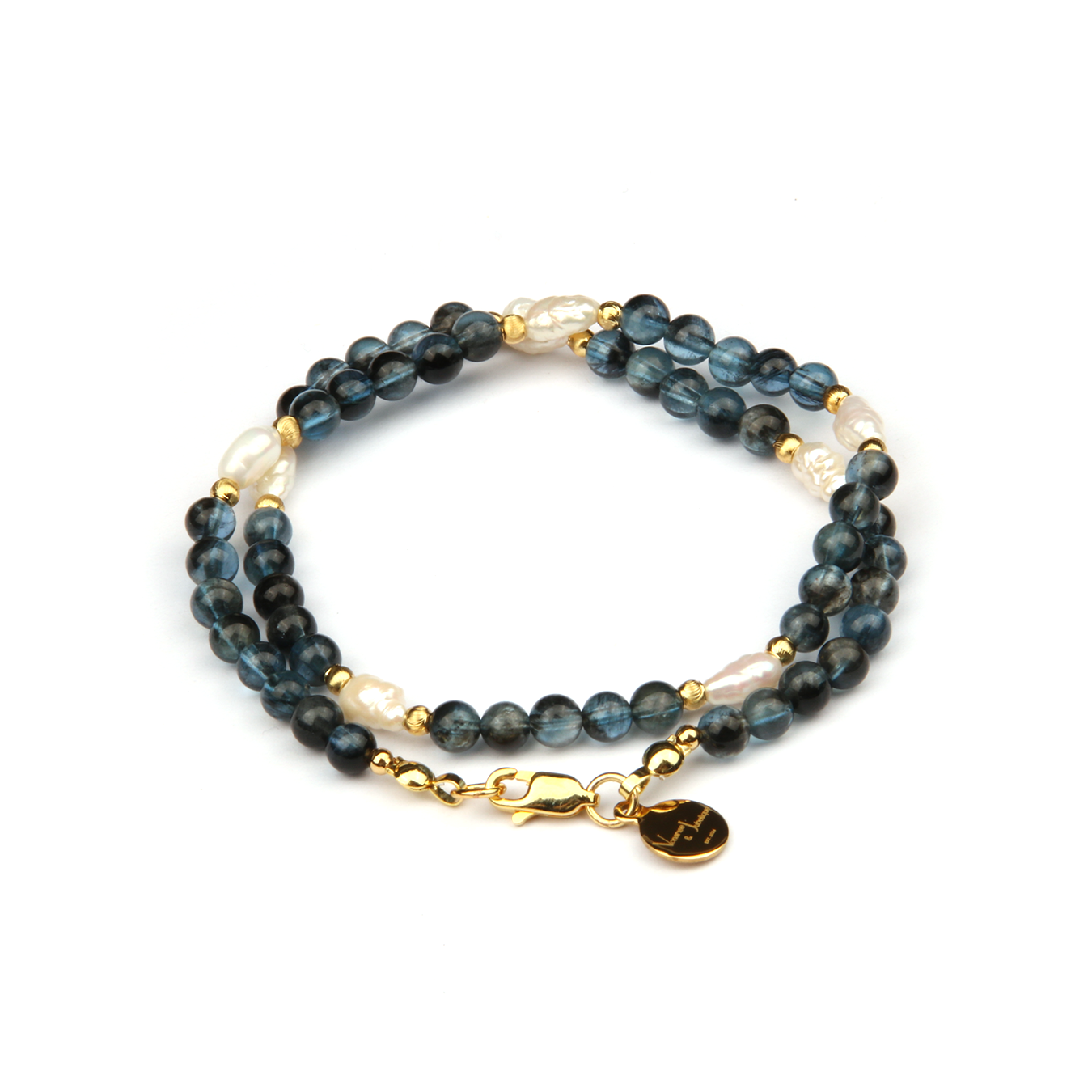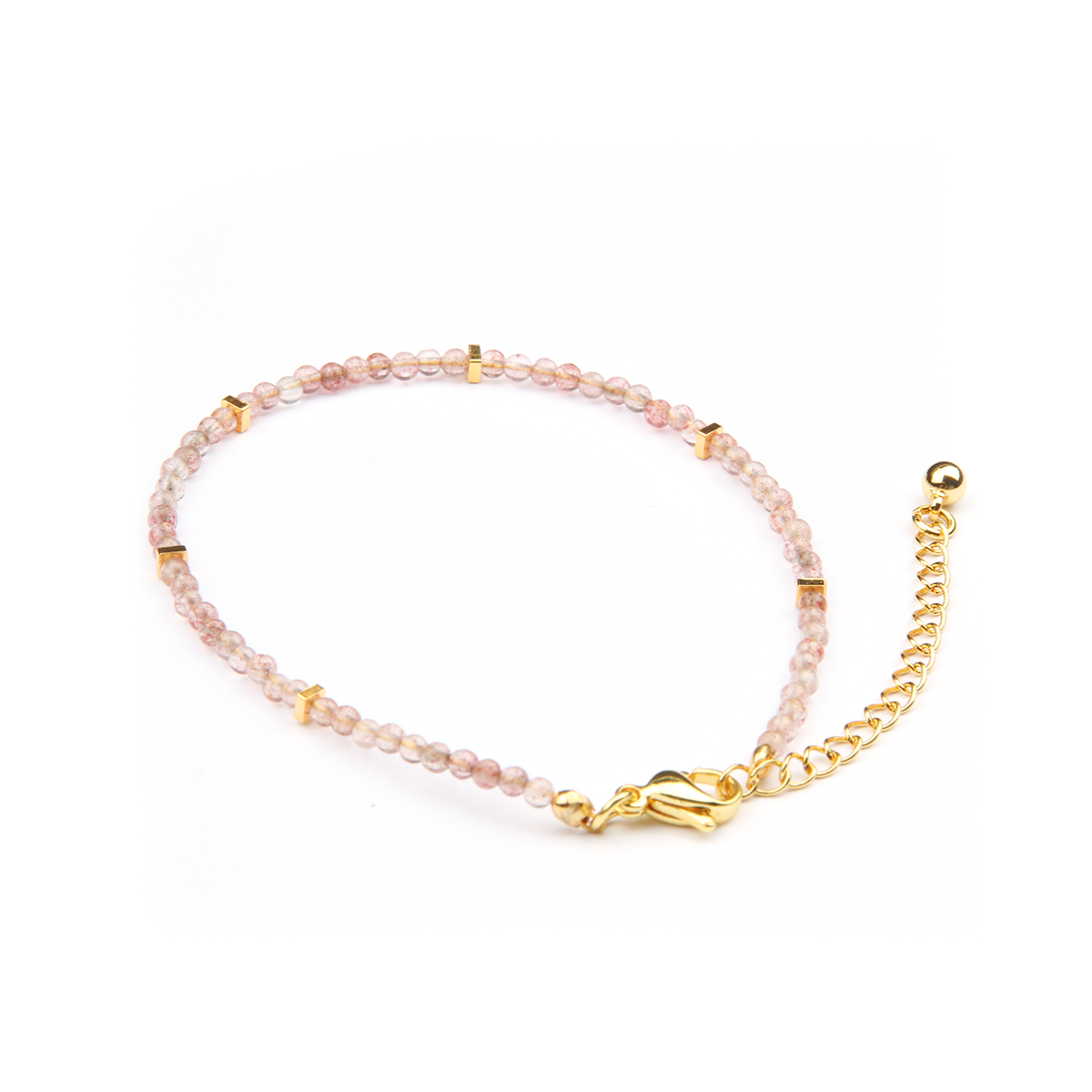Turquoise
The Gemstone of Serenity and Protection
Turquoise is one of the oldest and most revered gemstones in history, known for its vibrant blue-green color and powerful spiritual properties. This translucent stone has been treasured by ancient civilizations and is still highly sought after today for its beauty and metaphysical benefits. In this guide, we’ll explore the origins, formation process, cultural significance, and current market trends for turquoise, alongside styling tips and color inspirations for jewelry lovers.
Origin of Turquoise
Turquoise is primarily sourced from arid regions with copper deposits, where it forms naturally through the interaction of copper-rich water with aluminum phosphate.
Major Sources of Turquoise:
-
United States: The Southwest, particularly in Arizona, Nevada, and New Mexico, has long been the most prominent source of turquoise. Nevada is home to some of the world's highest-quality turquoise.
-
Iran: Iran, historically known as Persia, has been a significant producer of turquoise for over 3,000 years. The Persian Turquoise is highly prized for its rich blue color.
-
China: China is the largest exporter of turquoise in the world. While some of the turquoise from China is more affordable, high-quality pieces can still be found.
-
Mexico: Mexican turquoise is also highly valued, often known for its distinct, bright green tones.
-
Egypt: Known for the Sinai Peninsula’s deposits, Egypt's turquoise was famously used in jewelry and burial artifacts in ancient Egypt.
While turquoise is widely available, the best quality stones are rarer and command higher prices.
Formation Process of Turquoise
Turquoise forms deep underground where copper-rich groundwater reacts with aluminum-bearing rocks. This reaction forms the turquoise gemstone, which has unique chemical and mineral compositions. The formation process occurs when water infiltrates copper-bearing rocks, often over thousands of years.
Key Stages in Turquoise Formation:
-
Copper and Aluminum Interaction – Copper-rich waters mix with phosphate minerals and aluminum-bearing rocks, leading to the formation of turquoise.
-
Solidification – Over time, phosphate compounds in the rock solidify, forming a porous gemstone that may have matrix patterns or a smooth finish, depending on the type.
-
Variations – The stone’s appearance can range from solid turquoise to matrix-filled versions, depending on the conditions under which it formed.
Cultural Significance and Meaning of Turquoise
Turquoise has been highly regarded in cultures worldwide for thousands of years, often linked to protection, healing, and spiritual growth.
Historical Uses of Turquoise:
-
Ancient Egypt: The Egyptians regarded turquoise as a symbol of life and protection, incorporating it into burial masks, jewelry, and even the famous King Tutankhamun’s tomb.
-
Native American Tribes: For centuries, turquoise was worn by Native American tribes such as the Navajo, Zuni, and Hopi. It is still considered a sacred stone, believed to promote spiritual well-being and physical healing.
-
Ancient Persia: Persian turquoise, known for its beautiful blue color, was a symbol of royalty and protection.
-
Modern Beliefs: Today, turquoise is considered a healing stone that stimulates emotional balance, enhances communication, and fosters serenity.
Market Value and Rarity
Turquoise is relatively affordable when compared to other precious gemstones, but the rarity and quality of the stone can significantly affect the price. Turquoise pricing depends on factors like color, matrix patterns, origin, and treatment (whether it is natural or enhanced).
Market Price (2024):
-
Affordable Range: $10 – $50 per piece for tumbled stones and lower-grade beads.
-
Mid-range: $50 – $150 per piece for higher-quality gemstones and well-polished cabochons.
-
High-end: $150 – $1,000+ per piece for premium-grade turquoise (such as Persian or high-quality American turquoise).
Rarity:
-
High-quality turquoise with no matrix (a web of veins) is rarer and more valuable.
-
Turquoise that maintains its color and is sourced from renowned regions, such as Persian turquoise, will command premium prices.
Turquoise Properties
External
Wealth & Abundance
Prosperity
Career & Success
Professional Network
Relationships & Communication
Communication Skills
Social Connectivity
Inner
Resolution
Composure
Calmness
Harmony
Connectivity
Virgo
Initiation
Birth month

Zodiac



Element




Chakras

Planet

Mohs Hardness
5 or 6
Click to copy the Turquoise properties
Jewelry Uses and Fashion Tips
Turquoise is widely used in jewelry design due to its distinctive blue-green hue, smooth texture, and durability (with a Mohs hardness of 5-6).
Best Jewelry Uses:
-
Necklaces & Pendants: A turquoise pendant on a silver chain creates a classic, elegant look.
-
Rings & Bracelets: Turquoise cabochons or turquoise-inlaid rings make a statement, particularly in bohemian and southwestern jewelry.
-
Earrings: Small turquoise studs or dangling earrings are ideal for casual or formal occasions.
Fashion Tips:
-
Pair with Neutral Tones: Complement turquoise with white, beige, or gray for a clean, modern aesthetic.
-
Bohemian Style: Pair with leather, silver, and feather designs for a more earthy, free-spirited look.
-
Southwestern Influences: Pair turquoise jewelry with denim, earth-toned colors, and fringe for a perfect fusion of boho-chic style.
Pairing Turquoise with Other Gemstones or Materials
Top Turquoise Pairings:
| Gemstone | Reason for Pairing |
|---|---|
| Silver | Turquoise’s cool tones work beautifully with sterling silver, giving the stone an elegant and contemporary look. |
| Lapis Lazuli | Both stones represent wisdom and spiritual enlightenment, and they combine well in luxurious or ethereal jewelry pieces. |
| Citrine | A warm yellow gemstone like citrine enhances the soothing qualities of turquoise and provides a balance of warmth and coolness. |
| Moonstone | The soft blue glow of moonstone harmonizes with turquoise, enhancing its healing and emotional properties. |




These pairings balance color, energy, and style, making turquoise an incredibly versatile gemstone in jewelry design.
Crystal Color Palettes for Artistic and Fashion Inspiration
Turquoise’s blue-green color palette offers a rich source of artistic inspiration. Here are five color codes for turquoise-related artwork and design:

- #30D5C8 Turquoise Blue – The classic vibrant turquoise hue.
- #87CEEB Sky Blue – A lighter, serene blue inspired by turquoise’s calming properties.
- #7FFFD4 Aquamarine – A fresh, cool blue with a slightly greener tint.
- #C97D5B Copper Brown – Inspired by the copper matrix often seen in turquoise, adding depth and earthiness.
- #FFFFF0 Ivory – A soft, neutral off-white that pairs effortlessly with turquoise.
These hues create a range of possibilities for artistic projects, interior design, and fashion statements.
Turquoise has long been linked to emotional healing and calming energy. If you could wear turquoise as a part of your spiritual or healing practice, what aspect of your life would you focus on? Communication, emotional healing, or something else?







Share:
Pyrite Gemstone Guide: Properties, Rarity, Pricing, Jewelry Uses & Stylish Tips
Tiger's Eye Gemstone Guide: Properties, Rarity, Pricing, Jewelry Uses & Stylish Tips